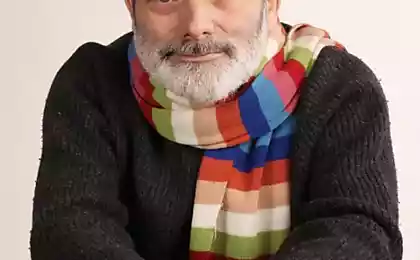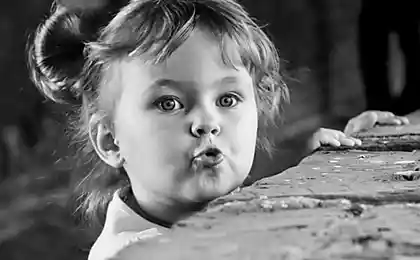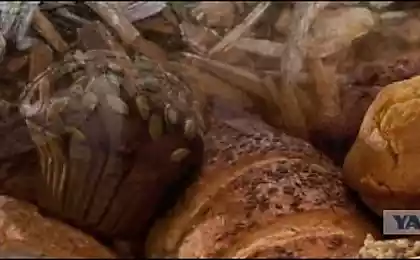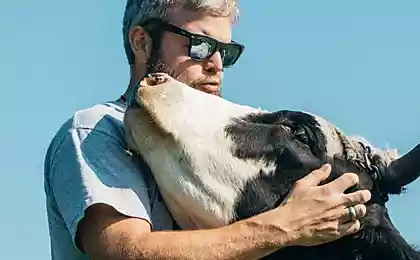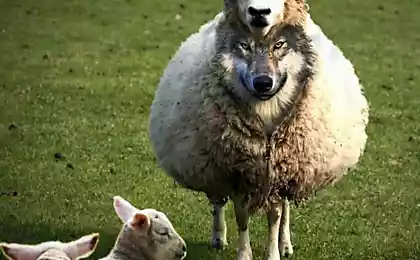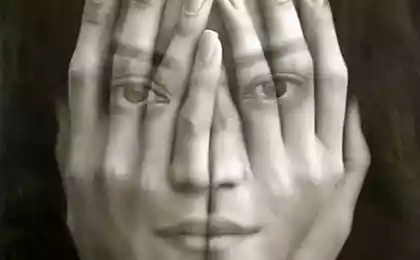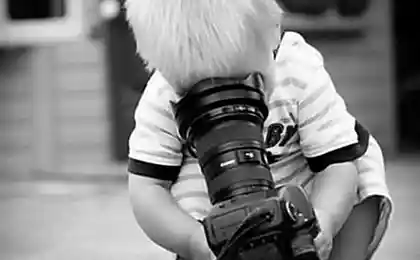444
To seven years children begin to lie in an adult
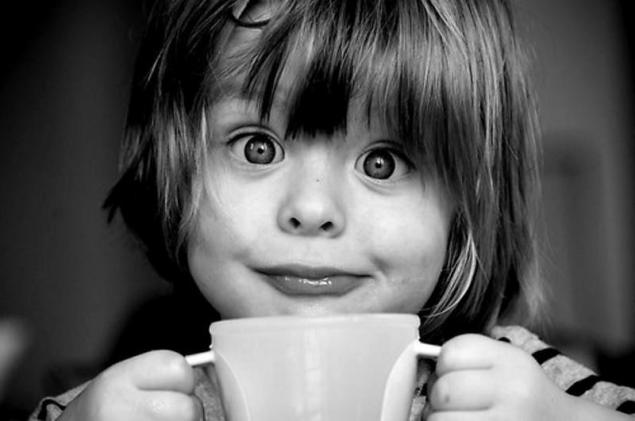
With age children learn to use their understanding of other people's feelings and thoughts to achieve their goals.
We differ from animals in that we can assess their thoughts and feelings; moreover, in the same way we can evaluate the thoughts and feelings of other people. That is, we can understand the motivation of another person, feels in his emotional state and with a high degree of certainty predict its future behavior. Conversely, the behavior we can understand what the person is thinking: for example, if someone leaving the house, takes the umbrella, we confidently conclude that this "someone" believes that it will rain. This ability is described as the ability to build a model of the mental state, are sometimes found the name of "minding your mind", "theory of intention", "theory of mind". Recently, there is evidence that the ability to understand other people's motives have not only people, but also some monkeys and birds.
The "theory of mind" there are many aspects and develops this ability, we have gradually. For example, a two-year children begin to understand the difference between their thoughts and reality that thoughts can be alone, but the reality is quite different. By three years children realize that thoughts, feelings, etc. is like a separate world distinct from the physical environment. In other words, the child realizes that the dream can not be touched with your finger. And only to four years children have the ability to see other error. In 1983, psychologists put forth a very simple experiment in which children of different ages showed how a puppet character is hiding chocolate in the cupboard and leaves the room. Then the experimenter moved the chocolate from the cupboard. The children had to say where the doll will look for his chocolate when he returns. Those who were three years old, believed that the doll knows what they are, and therefore to look for the chocolate where he hid it. And only 4-year-old understood that the doll may have their own ideas, and that the doll was not seen, as he moved the chocolate and therefore look for it it will be in the cafeteria. This, incidentally, explains why three-year olds is bad cannot lie, because they believe that what they know, you know all other people.
However, the development of the ability to understand someone else's mental state goes on and on, as they grow older children. The "theory of mind" is a more difficult level, which is called a "strategic theory of mind" – when we don't just understand, what one believes, feels and thinks, but also understand the reasons for his emotion. How this works can be explained with an example. Suppose Sasha is going to lie to your Mary about where he was last night. However, Mary knows that he can lie, and therefore is not going to believe him. But Sasha realizes that Mary prepared for his lies, because he decides that it is better to tell the truth. As you can see, there is a rather complicated chain of reasoning, based again on the ability to get into someone else's mental state. And now psychologists from the University of Minnesota (USA) wanted to know at what age a person has the ability to play such games.
A group of children from age three to eight were invited to compete in the competition in which we had to leave the competitor without the stickers. Each of the players could take from one to five stickers, but they remained in the hands only in case if the player took them less than the opponent. If they had more, then the player has lost all that took this turn, if both took the same number of stickers, both were left with nothing. The goal of the game was to collect as many stickers, and it is clear that the most successful strategy in this case is to take one or two stickers: in the worst case, the opponent will take one against your two, and your loss will be small. However, this strategy has shown only seven-year-old children and adults. Children younger than seven years tried every time to collect as many stickers – the goal of the game was to score as many as possible!
In another experiment, children had to indicate another person which of two boxes is candy. The trick was that if the person guessed incorrectly, the candy went to the one who was shown on the box. That is the purpose of the person who supervised, so to say, the quest was to confuse the seeker. Were like write the authors in their article in the Proceedings of the National Academy of Sciences that children as young as seven were able to develop a rather subtle strategy – they mostly showed the other person the wrong box, but sometimes still spoke the truth to another, not guessed their intention to get the candy. Adults of tactical and strategic considerations often diluted with lies in small portions of truth to be won, but children under seven years of this stratagem remained inaccessible.
Obviously, seven years a person is difficult to cope with their desires: the desire to win, get candy, get as many stickers, etc. suppresses any attempt to plan actions and calculate the course of the game (and the thinking of the opponent) a few steps ahead. It is possible that children simply do not have enough working memory to keep in mind all the data on the current situation, so their wishes is not obstructed. Indeed, it is known that working memory is actively developing as the time between six and seven years, however, there is neuroanatomical features allow seven year old children to tell an adult, scientists have yet to figure out.
Cyril Stasevich
Source: nkj.ru
A stunning experiment— the family year not eating sugar
Casserole of zucchini with tomatoes and cheese




